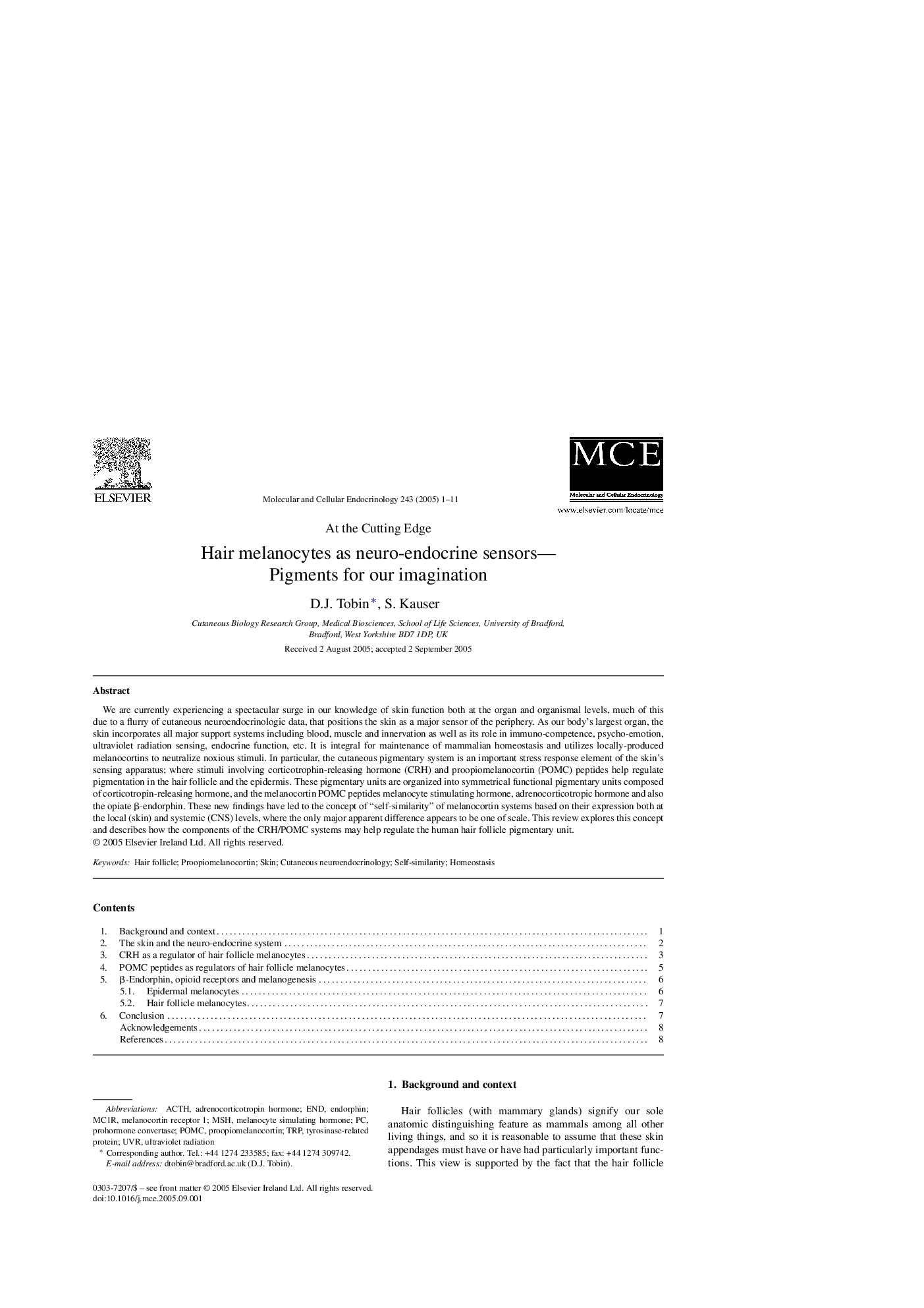| Article ID | Journal | Published Year | Pages | File Type |
|---|---|---|---|---|
| 9914886 | Molecular and Cellular Endocrinology | 2005 | 11 Pages |
Abstract
We are currently experiencing a spectacular surge in our knowledge of skin function both at the organ and organismal levels, much of this due to a flurry of cutaneous neuroendocrinologic data, that positions the skin as a major sensor of the periphery. As our body's largest organ, the skin incorporates all major support systems including blood, muscle and innervation as well as its role in immuno-competence, psycho-emotion, ultraviolet radiation sensing, endocrine function, etc. It is integral for maintenance of mammalian homeostasis and utilizes locally-produced melanocortins to neutralize noxious stimuli. In particular, the cutaneous pigmentary system is an important stress response element of the skin's sensing apparatus; where stimuli involving corticotrophin-releasing hormone (CRH) and proopiomelanocortin (POMC) peptides help regulate pigmentation in the hair follicle and the epidermis. These pigmentary units are organized into symmetrical functional pigmentary units composed of corticotropin-releasing hormone, and the melanocortin POMC peptides melanocyte stimulating hormone, adrenocorticotropic hormone and also the opiate β-endorphin. These new findings have led to the concept of “self-similarity” of melanocortin systems based on their expression both at the local (skin) and systemic (CNS) levels, where the only major apparent difference appears to be one of scale. This review explores this concept and describes how the components of the CRH/POMC systems may help regulate the human hair follicle pigmentary unit.
Related Topics
Life Sciences
Biochemistry, Genetics and Molecular Biology
Cell Biology
Authors
D.J. Tobin, S. Kauser,
